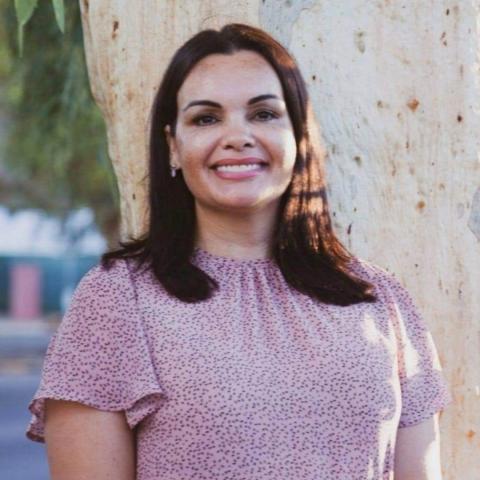
Catherine Satour is a strong Central Australian leader, committed to social justice, empowering others and strengthening community. She is a proud Pertame Arrernte Mirning woman, a musician, mentor and mother who has made a significant contribution to advocating for Aboriginal and Torres Strait Islander peoples and working to enact change. Some key achievements; with her former role as an Alice Springs Town Councillor include facilitating the installation of the Aboriginal Flag on Anzac Hill in recognition of Alice Springs as Arrernte Country which was asked for by the community for more than 30 years.
Catherine has a background of working in business administration, community development, health and Indigenous media through Central Australian Aboriginal Congress, Central Australian Aboriginal Media Association (CAAMA) along with National Indigenous Television and the Tandanya Aboriginal Cultural Centre in Adelaide. Catherine is from a large local and proud Mparntwe family and has music in her blood, having played her first gig at 9 years old with her father Bunna Lawrie and his legendary band Coloured Stone. Through her music Catherine shares experiences of life, love and place through songs that fuse rock and soul.
Her music journey spans 24 years with performances in communities throughout the Northern Territory and community grassroots festivals around the country. She has produced two self-funded solo album releases, and in 2012 produced and released Australia’s first Aboriginal female artist compilation album Desert Divas Volume 1. She has mentored women and men in music throughout the APY lands, Central Desert, Barkly region, Katherine and Darwin since 2008.
Catherine is the current Chair of the NT Women in Music Reference Group Committee within Music NT and is dedicated to ensuring the Northern Territory music culture is safe and supports women. The work of ‘Desert Divas’ has significantly contributed to Music NT’s Strategic Directions for Women in Music ‘You Gotta See It To Be It” report. She continues to be a role model for many young Aboriginal and non-Aboriginal women in the community.


